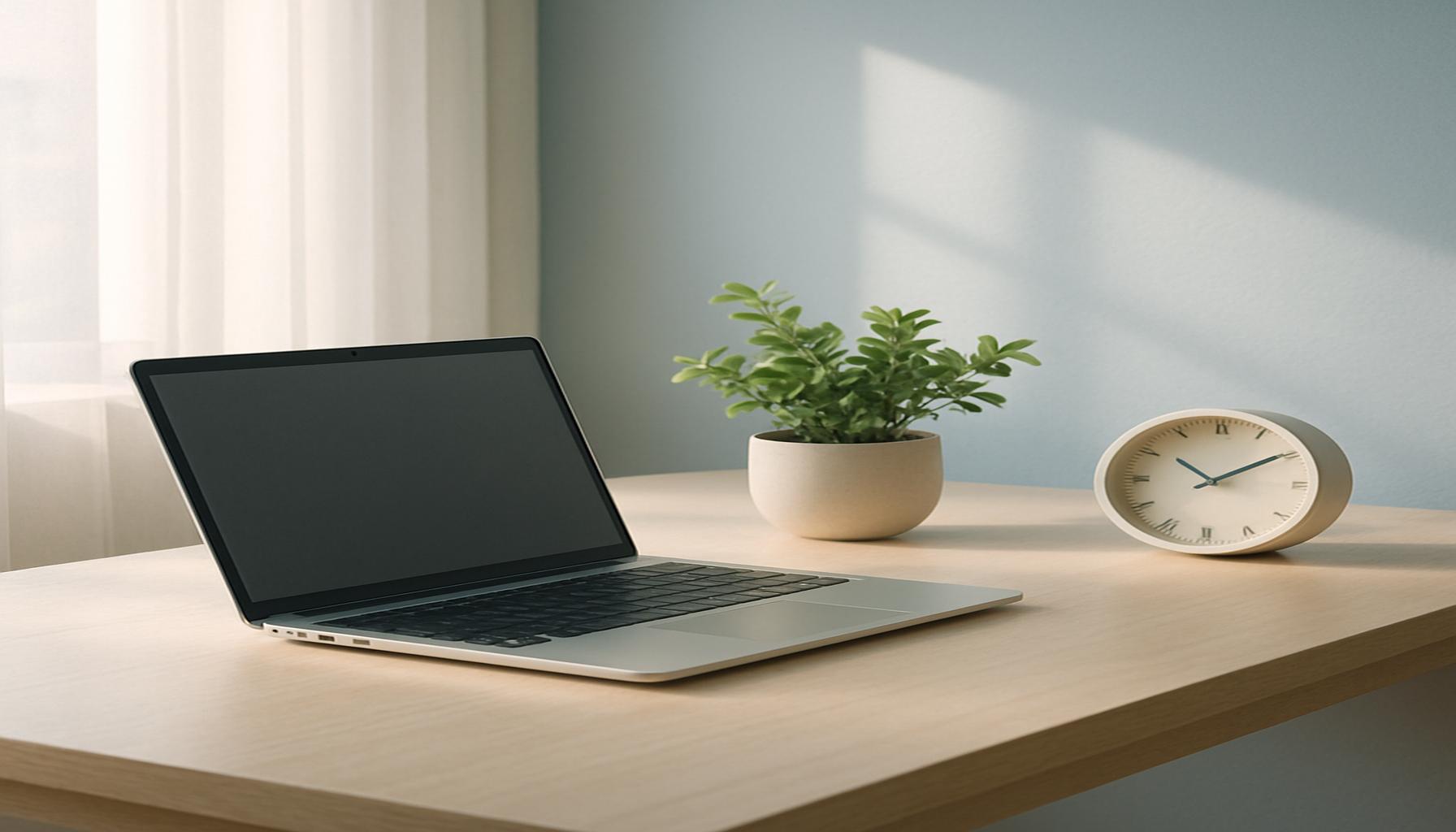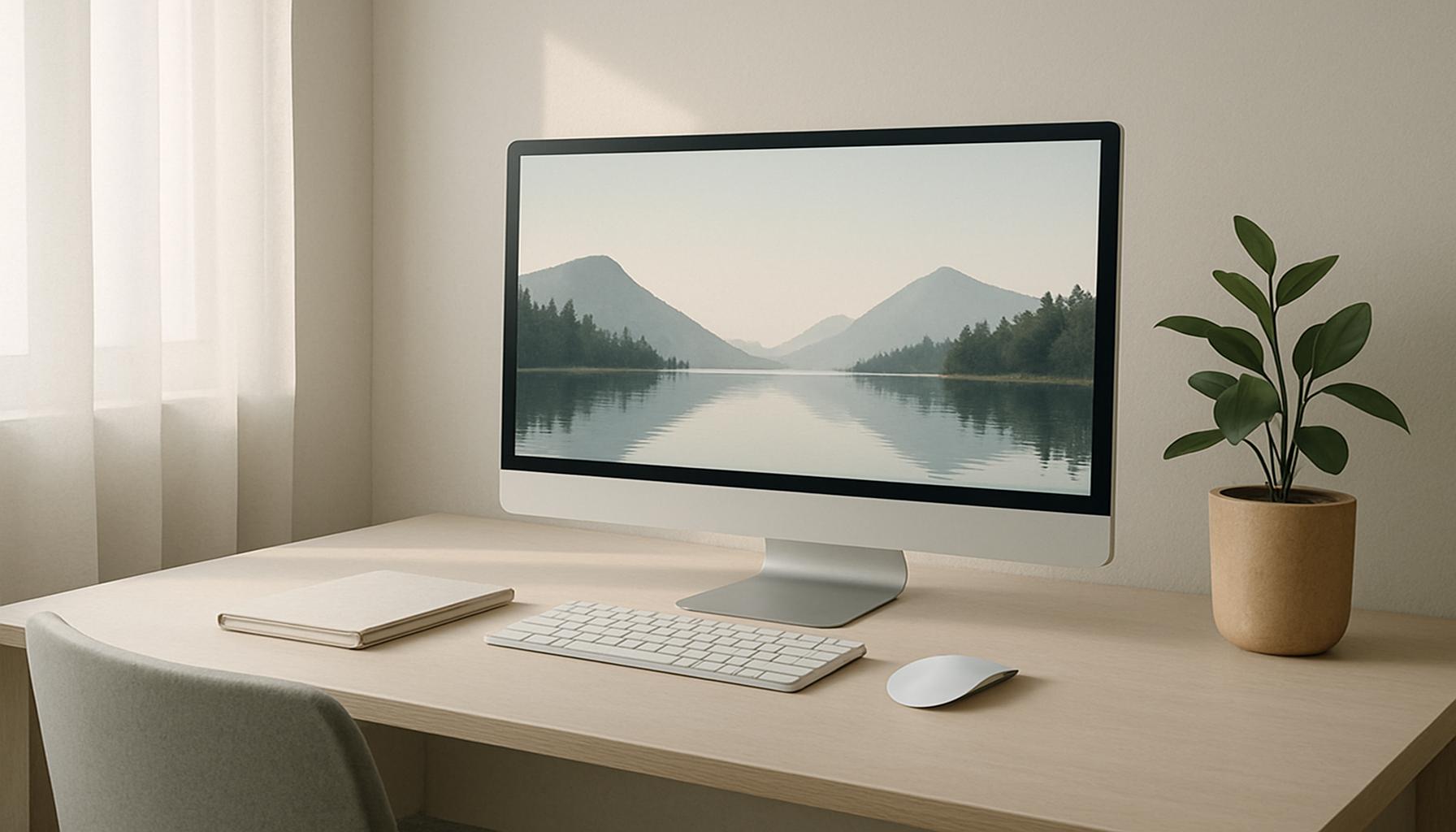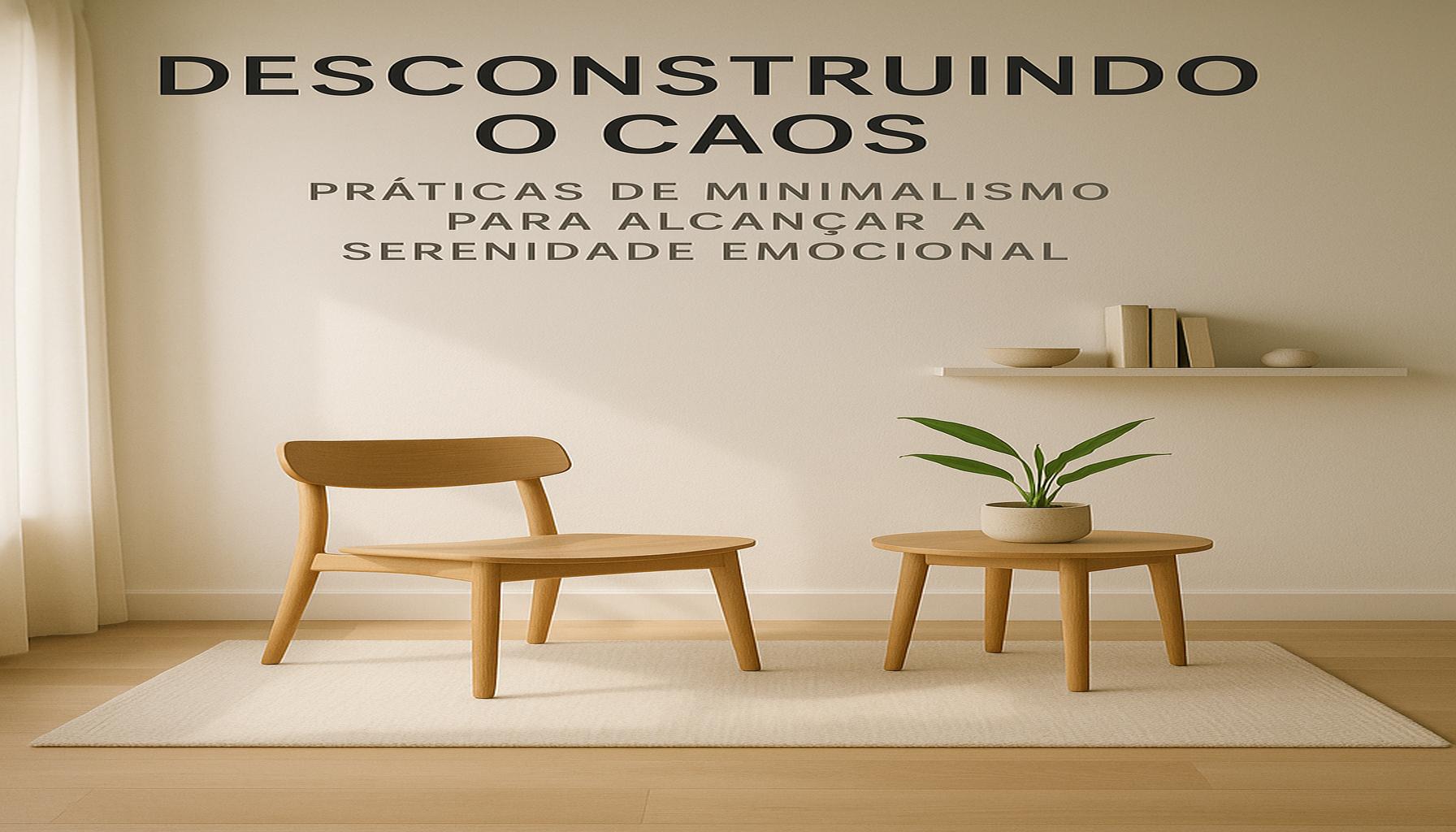Mindfulness and Minimalism: Cultivating Serenity Through the Reduction of Excess
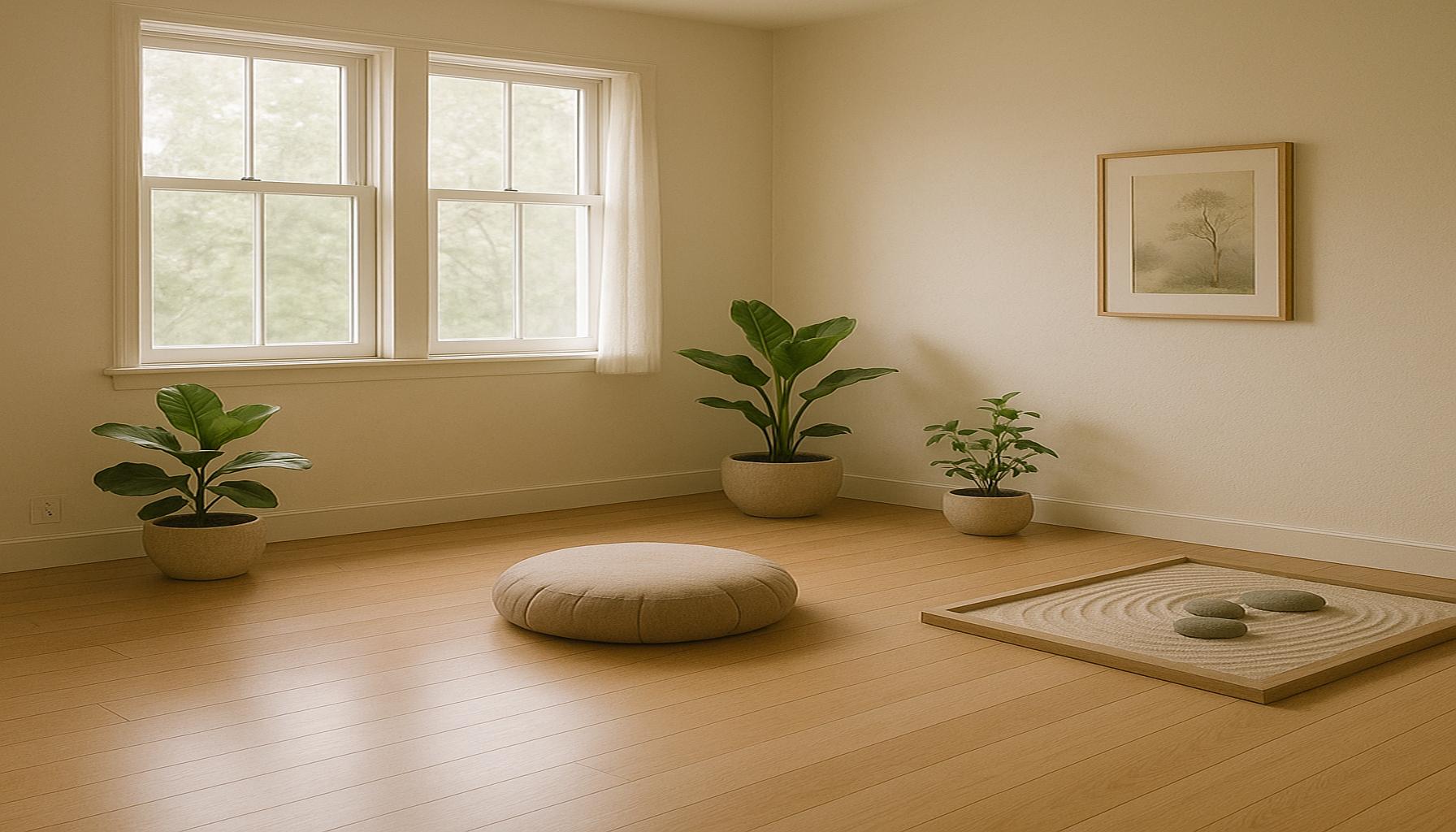
Discovering Serenity in a Hectic World
In today’s fast-paced society, the constant influx of information and material possessions can often feel overwhelming. The principles of mindfulness and minimalism offer a refreshing escape, guiding us towards a life filled with serenity and purpose. By intentionally reducing excess, we pave the way for a more peaceful existence. These practices are not just trends; they serve as essential frameworks to reclaim our mental space and emotional clarity.
Many individuals are exploring these concepts through various means, such as:
- Mindful Living: This practice emphasizes being fully present during daily activities, whether it’s savoring a morning cup of coffee or taking a peaceful walk through the park. It encourages deep awareness of our surroundings and thoughts, enabling us to engage more meaningfully with our lives.
- Decluttering Spaces: Eliminating unnecessary items can have a profound impact on our mental state. Studies indicate that a clean, organized environment fosters a sense of control and calm, making it easier to focus on what truly matters.
- Digital Detox: Disconnecting from technology, even for a short period, can significantly reduce mental clutter. Setting aside specific times to unplug can help individuals reconnect with the present moment and enhance their interactions with those around them.
The combination of mindfulness and minimalism can transform our lives in profound ways. Research suggests that simplifying our surroundings and focusing on the present moment can lead to:
- Lower stress levels: A minimalist approach reduces distractions, allowing for a more focused and relaxed mindset.
- Improved mental clarity: When individuals prioritize what is essential, they often find themselves thinking more clearly and making better decisions.
- Enhanced emotional well-being: Practicing mindfulness promotes positive feelings, helps regulate emotions, and can even lead to higher levels of happiness.
As we delve deeper into the synergy between these two powerful practices, we uncover tools and techniques to foster a tranquil mind and spirit. For instance, a simple practice to enhance mindfulness could be dedicating just five minutes each day to deep breathing exercises or guided meditation, which can result in noticeable reductions in anxiety. Similarly, embracing minimalism doesn’t just involve getting rid of physical possessions; it also encompasses a shift in mindset that nurtures serenity amidst life’s chaos.
In a world filled with constant distractions and material temptations, making space for mindfulness and minimalism can be an advantageous choice. As this lifestyle gains traction in the mainstream, individuals are encouraged to not only explore these practices for themselves but to share their experiences with others, potentially ushering in a collective movement towards serenity in a hectic world.
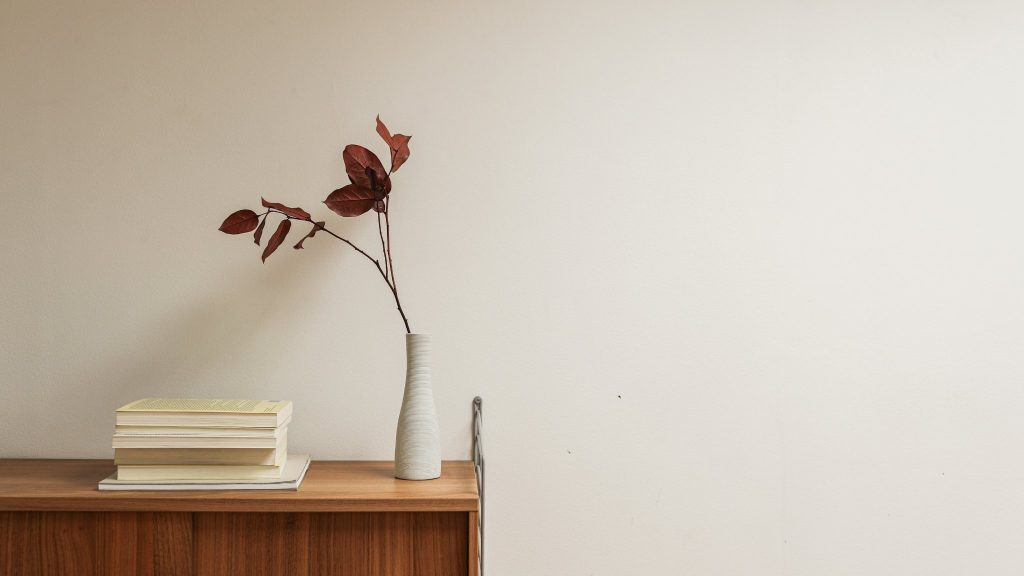
DISCOVER MORE: Click here to learn how minimalism can boost your productivity
The Intersection of Mindfulness and Minimalism
At its core, mindfulness invites us to slow down and immerse ourselves in the present, while minimalism encourages us to declutter both our physical and mental spaces. These two concepts, while distinct, create a harmonious relationship that empowers individuals to cultivate a more serene lifestyle. The integration of mindfulness into our minimalistic pursuits not only enhances our experience of simplicity but also allows us to appreciate the peace that comes from intentionally choosing what we allow into our lives.
To embark on a journey towards a more mindful and minimalist existence, it is vital to first understand the layers that contribute to our feelings of overwhelm. In many American homes, the average family accumulates an astonishing array of belongings; according to a survey conducted by the National Association of Professional Organizers, nearly 80% of Americans are overwhelmed by the clutter in their homes. This clutter can seep into our minds, leading to anxiety and distraction, ultimately pulling us away from what we hold dear. By practicing minimalism, we can address this accumulation and reduce the emotional weight that comes with it.
Embracing a minimalist lifestyle may involve several practical steps, including:
- Identifying Essential Items: Evaluate your belongings to determine which items truly serve a purpose or bring you joy. This exercise can result in a deeper understanding of what is necessary for your happiness and well-being.
- Creating a Decluttering Schedule: Set aside specific times to gradually declutter spaces in your home. A systematic approach often leads to greater success compared to tackling everything at once, making the transition feel less daunting.
- Establishing Mindful Consumption Habits: Before acquiring new items, pause to reflect on their necessity. This deliberation can prevent impulse purchases that contribute to a cycle of accumulation and regret.
In tandem with these steps, mindfulness practices such as meditation, journaling, or engaging in deliberate breathing exercises can dramatically enhance our journey towards minimalism. These tools allow us to focus our awareness, making it easier to recognize when we veer toward overconsumption or distraction. Mindfulness fosters an understanding that simplifies our desires and clarifies our emotional responses to both possessions and experiences. As we cultivate this awareness, we can more readily identify what truly brings us joy and fulfillment.
As individuals delve into the principles of mindfulness and minimalism, they may find that these practices encourage not only personal growth but also a shift in cultural paradigms. In a society where success is often measured by material wealth and busyness, the balance of serenity through simplicity and presence provides a revolutionary alternative. Building community around these shared values offers an opportunity to forge connections and support systems that further reinforce the serenity we seek.
Understanding the Essence of Minimalism
Minimalism is not merely about living with less; it is a profound philosophy that invites individuals to redefine their relationship with material possessions. By removing the visual and mental clutter, minimalism fosters an environment that enhances focus, tranquility, and mindfulness. This practice cultivates a space where we can invest our time and energy in what genuinely matters. One essential aspect of minimalism is the intentionality behind our choices. Each item we keep should serve a purpose, either functional or emotional, promoting a sense of peace and clarity. This principle invites us to evaluate our belongings critically, encouraging us to prioritize experiences over possessions. In the hustle and bustle of modern life, adopting a minimalist approach can help us reconnect with our core values and purpose.
Mindfulness: Enhancing Daily Life
Mindfulness complements minimalism beautifully. By embracing mindfulness, we become fully present in each moment, appreciating the simple joys of life. This practice enriches our daily experiences, transforming mundane tasks into meaningful rituals. Whether it’s savoring a cup of tea or enjoying a walk in nature, mindfulness invites us to engage deeply with the world around us, fostering an attitude of gratitude and contentment.Furthermore, mindfulness in a minimalist context encourages us to declutter not just our physical spaces, but also our mental landscapes. By letting go of toxic thoughts, past grievances, and anxiety about the future, we can create mental space that nurtures emotional well-being. This synergy between mindfulness and minimalism ushers in a serene lifestyle, allowing us to navigate life with clarity and purpose.
Practical Steps Towards Minimalism
Starting your journey toward minimalism can be a gradual yet rewarding process. Begin by assessing your living or workspace, identifying items that no longer serve you. Implement the one-in-one-out rule: for every new item you acquire, consider letting go of one existing possession. This method helps maintain a balance and prevents accumulation.Moreover, set aside dedicated time each day or week to practice mindfulness. Techniques such as meditation, deep breathing exercises, or simply sitting in silence can significantly enhance your ability to stay grounded amid distractions. Ultimately, embracing both mindfulness and minimalism can lead to a more fulfilling, serene existence, empowering you to focus on what brings you true joy.
| Category | Key Features |
|---|---|
| Less Clutter | Creates a positive environment for mental clarity. |
| Enhanced Focus | Encourages prioritizing important tasks over unnecessary distractions. |
DISCOVER MORE: Click here for simple strategies
Building a Sustainable Mindful Minimalism
The journey of mindfulness and minimalism is not merely about reduction; it’s a pathway to living sustainably and intentionally. As individuals learn to navigate their personal spaces and preferences, the focus shifts from acquiring more to cherishing what one already possesses. This ethos can inspire lasting changes that resonate beyond the individual, impacting communities and environments.
One practical approach to sustainable minimalism is the concept of curated living. Curated living invites individuals to view their spaces not just as houses full of belongings but as evolving galleries that reflect their values and aspirations. By intentionally selecting items that hold significance and resonate with one’s purpose, individuals can create environments that contribute to mental clarity and emotional well-being. This can be seen in the rising trend of conscious consumerism, where individuals opt for high-quality, ethically sourced products over cheap, mass-produced goods. This shift not only promotes minimalism by reducing the volume of purchases but also aligns with mindfulness, as consumers reflect on their choices and their impact on the world.
Moreover, adopting a mindset of gratitude becomes a powerful catalyst for both mindfulness and minimalism. By appreciating what we already own, we find joy in the simplicity of our possessions, reducing the desire for more. Researchers have found that practicing gratitude can significantly lower feelings of anxiety and depression, thereby enhancing overall mental health. This approach can be as simple as maintaining a daily gratitude journal in which individuals can express their appreciation for items that contribute to their lives, from a favorite book to a reliable kitchen tool. Over time, this practice fosters a greater connection to our belongings and solidifies the importance of each item in our lives.
Another compelling aspect of integrating mindfulness within a minimalist framework is the cultivation of experiential over materialistic values. Studies suggest that experiences, such as travel or shared activities, provide greater satisfaction than tangible possessions. People often report feeling more fulfilled after engaging in experiences with loved ones rather than after acquiring new items. Therefore, by prioritizing experiences that foster connections and personal growth, individuals can enrich their lives without the burden of physical clutter.
Moreover, technology plays a transformative role in helping individuals embrace mindfulness and minimalism. With the rise of various mindfulness apps and online communities focused on minimalism, individuals in the United States can access guidance and support on their journeys, no matter where they are. Whether it’s following a minimalist influencer on social media or utilizing apps to practice meditation and mindfulness, technology facilitates a sense of community and shared purpose that can enhance the motivation to pursue simpler living. This connectivity complements the idea that minimalism and mindfulness transcend personal practices, contributing to a larger cultural movement focused on intentional living.
While embarking on this journey requires self-reflection and commitment, the combined approach of mindfulness and minimalism ultimately leads to a more fulfilling, serene existence. Framing our world through the lens of necessity and appreciation lays the groundwork for not only personal contentment but also a ripple effect that encourages others to pursue similar paths of tranquility and purpose.
LEARN MORE: Click here to discover how decluttering can improve your mental well-being
Conclusion: Embracing a Mindful Minimalist Lifestyle
In a world increasingly dominated by consumption and chaos, the practice of mindfulness and minimalism emerges as a beacon of tranquility and insightful living. The significance of reducing excess is not merely confined to physical belongings but extends to the very fabric of our daily lives. By cultivating a conscious awareness of our environment and simplifying our possessions, we not only free ourselves from the burden of clutter but also rediscover the joy and value of simplicity.
As we’ve explored, the journey towards mindful minimalism is multi-faceted, encompassing curated living, appreciation for existing possessions, and prioritizing meaningful experiences over material goods. This holistic approach fosters a sense of peace and clarity that transcends individual experiences, encouraging a ripple effect within families, communities, and beyond. Engaging with practices like gratitude journaling or participating in conscious consumerism can significantly enhance our mental well-being, paving the way for a more sustainable lifestyle.
The integration of technology in this journey cannot be overlooked. With the help of mindfulness apps and online platforms, individuals in the United States and around the world can connect with a community that shares similar values, providing support and inspiration along the way. As we navigate our ever-evolving lives, it becomes increasingly important to recognize the potential of mindfulness and minimalism not just as personal choices, but as essential elements in cultivating a broader cultural movement that advocates for intentional, serene living.
In embracing this transformative path, we can aspire to a future that treasures quality over quantity, fostering a lifestyle rich in purpose and fulfillment. Ultimately, the integration of mindfulness and minimalism offers not just a method of decluttering our external environments, but an opportunity to cleanse our minds, enrich our souls, and enrich our connections with the world around us.
